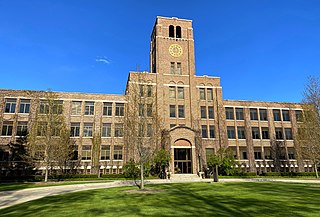
Kohler Co., founded in 1873 by John Michael Kohler, is an American manufacturing company based in Kohler, Wisconsin. Kohler is best known for its plumbing products, but the company also manufactures furniture, cabinetry, tile, engines, and generators. Destination Kohler also owns various hospitality establishments in the United States and Scotland. In February 2017, Kohler Co. acquired UK-based Clarke Energy from the management team and ECI Partners, a multinational specialist in the engineering, construction, installation, and maintenance of engine-based power plants and is an authorized distributor of GE's reciprocating engines in 19 countries worldwide. In November 2023, it was announcing that Kohler is establishing the Energy group independently and would be bought in a complex partnership with private equity group Platinum Equity, the deal is slated to close in Q1 2024.
Eugene Von Bruenchenhein (1910–1983) was an American self-taught artist from Milwaukee, Wisconsin. Over the course of fifty years, from the 1930s until his death in 1983, Von Bruenchenhein produced an expansive oeuvre of poetry, photography, painting, drawing and sculpture. His body of work includes over one thousand colorful, apocalyptic landscape paintings; hundreds of sculptures made from chicken bones, ceramic and cast cement; pin-up style photos of his wife, Marie; plus dozens of notebooks filled with poetic and scientific musings. Never confined to one particular method or medium, Von Bruenchenhein continually used everyday, discarded objects to visually explore imagined past and future realities.

Lenore Tawney was an American artist working in fiber art, collage, assemblage, and drawing. She is considered to be a groundbreaking artist for the elevation of craft processes to fine art status, two communities which were previously mutually exclusive. Tawney was born and raised in an Irish-American family in Lorain, Ohio near Cleveland and later moved to Chicago to start her career. In the 1940's and 50's, she studied art at several different institutions and perfected her craft as a weaver. In 1957, she moved to New York where she maintained a highly successful career into the 1960's. In the 1970's Tawney focused increasingly on her spirituality, but continued to make work until her death.
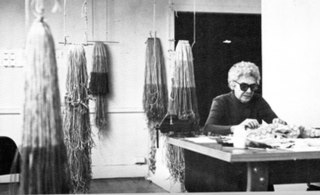
Claire Zeisler was an American fiber artist who expanded the expressive qualities of knotted and braided threads, pioneering large-scale freestanding sculptures in this medium. Throughout her career Zeisler sought to create "large, strong, single images" with fiber.

The Mary Nohl Art Environment is a residence in the Milwaukee suburb of Fox Point, Wisconsin. The property, which is filled with folk art created by artist Mary Nohl (1914–2001), is listed on the National Register of Historic Places.
Scott Reeder is a multi-disciplinary artist in Chicago, IL. He is currently represented by Canada in New York, NY and Kavi Gupta in Chicago, IL.

Patrick Earl Hammie is an American visual artist and educator best known for his large-scale portrait and nude paintings of allegorical subjects. Hammie's paintings emphasize movement, color, and sensuality, drawing from art history and visual culture to examine ideas related to cultural identity, masculinity, beauty, and sexuality. Hammie lives in Champaign, where he currently works as an Associate Professor at the University of Illinois Urbana-Champaign.
Raymond "Ray" Kakuo Yoshida was an American artist known for his paintings and collages, and for his contributions as a teacher at the School of the Art Institute of Chicago from 1959 to 2005. He was an important mentor of the Chicago Imagists, a group in the 1960s and 1970s who specialized in distorted, emotional representational art.
Gary Lee Noffke is an American artist and metalsmith. Known for versatility and originality, he is a blacksmith, coppersmith, silversmith, goldsmith, and toolmaker. He has produced gold and silver hollowware, cutlery, jewelry, and forged steelware. Noffke is noted for his technical versatility, his pioneering research into hot forging, the introduction of new alloys, and his ability to both build on and challenge traditional techniques. He has been called the metalsmith's metalsmith, a pacesetter, and a maverick. He is also an educator who has mentored an entire generation of metalsmiths. He has received numerous awards and honors. He has exhibited internationally, and his work is represented in collections around the world.
The Kohler Foundation, Inc., is a philanthropic organization that works in the areas of art preservation, grants, scholarships, and performing arts.
M12, aka M12 STUDIO, is an American artist collective and non-profit organization based in Colorado that features an evolving group of artist practitioners, curators, and designers. Together they create artworks, research projects, and education programs that explore rural cultures and landscapes. Initially formed as the municipalWORKSHOP in 2002 in York, Alabama by Richard Saxton when he was an artist-in-residence at the Rural Studio, an architecture studio run by Auburn University, the group evolved into M12 in 2007 when it became incorporated as a non-profit organization. The core members have created over 20 projects since founding; their work was featured in the 2014 publication "A Decade of Country Hits: Art on the Rural Frontier."
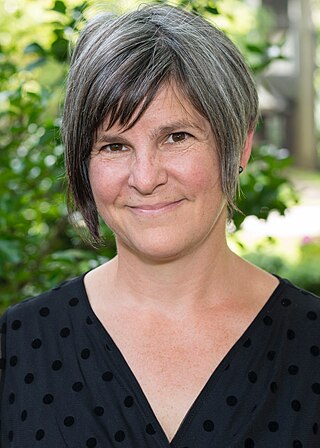
Beth Lipman is a contemporary artist working in glass. She is best known for her glass still-life compositions which reference the work of 16th- and 17th-century European painters.
Jack Earl is an American ceramic artist and former teacher, known for drawing inspiration from his home state of Ohio to create rural pieces “with meticulous craftsmanship and astute details… to where you could smell the air, hear the silence and swat the flies.” Although his works hint at highly personal, intellectual, and narrative themes in an almost unsettling manner, Earl is “a self-described anti-intellectual who shuns the art world." He is known particularly for using his trademark format, the dos-a-dos : “This art form is like a book with two stories… the two seemingly incongruent images prompt the viewer to fill in the conceptual gap through poetic speculation.” His work often involves dogs or the character “Bill”, who is said to be a combination of Earl’s father-in-law, himself, and others. The titles to his pieces are typically lengthy, stream-of-consciousness narratives that suggest the folk or rural lifestyle. These are intended to add another dimension to the artwork. His work has received a notable response over his decades-long career, especially since he is regarded as “a master at reminding us that within the events we take for granted are moments of never-ending mystery and wonder.” Earl continues to live in Lakeview, Ohio with his wife, Fairlie.
Kevin Blythe Sampson is an American artist and retired police officer living in Newark, New Jersey. He makes sculptures from discarded found objects that act as memorials for various people who have died. He has a studio based out of Newark.
Karen Thuesen Massaro is a ceramicist working in the United States known for creating unconventional arrangements of sculptural objects through her work. Interested in exploring abstraction, she has experimented with a variety of different themes including the repetition of forms and surface textural change, negative space, and the geometric patterning of natural objects. Massaro creates much of her artwork by taking casts of physical objects, like fruit, molding them out of clay, and decorating them with patterns. Her manipulations make common objects feel less ordinary. These experiments allow her to explore color and form in complex ways.
Indira Allegra is a multidisciplinary American artist and writer based in Oakland, California.

Beth Katleman is an American artist known for porcelain assemblage sculpture cast from found objects. Her allegorical installations fall within the genre of pop surrealism, combining decorative elements, such as Rococo embellishments and 19th century Toile de Jouy wallpaper scenery, with satirical references to consumer culture, fairy tales and classic literature. Katleman's work is in private and institutional collections and is exhibited internationally, including an installation commissioned by architect Peter Marino for Christian Dior, in the Hong Kong and London flagship boutiques. She lives and works in Brooklyn, New York, and is the recipient of the 2011 Moët Hennessey Prize, a Mid-Atlantic Arts Foundation grant, the Watershed Generation X Award, a Kohler Arts/Industry Fellowship and a residency in Cortona, Italy sponsored by the University of Georgia, Athens. Katleman holds a BA in English from Stanford University, an MFA from Cranbrook Academy of Art and an MBA in Arts Management from UCLA.
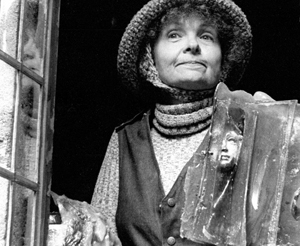
Stella Waitzkin (1920–2003) was an American installation artist known for sculptural representation of books.
Ruth DeYoung Kohler II was a museum director and teacher from Wisconsin who championed under-recognized, self-taught artists and vernacular art. She was the director of the John Michael Kohler Arts Center from 1972–2016. She led the development of the Art Preserve in Sheboygan, Wisconsin, the first museum dedicated to the exhibition and conservation of artist-built environments.
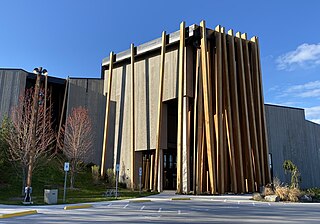
The Art Preserve is an art museum and a satellite campus of the John Michael Kohler Arts Center. The preserve houses a collection of artist-built environments and sculptural works. It is designed by Tres Birds and located in Sheboygan, Wisconsin. Opened in June 2021, the Art Preserve is the first museum dedicated to the exhibition, preservation, and care of artist-built environments. The museum also serves as a research space for the art environment genre.










